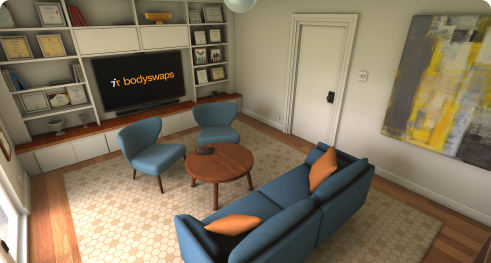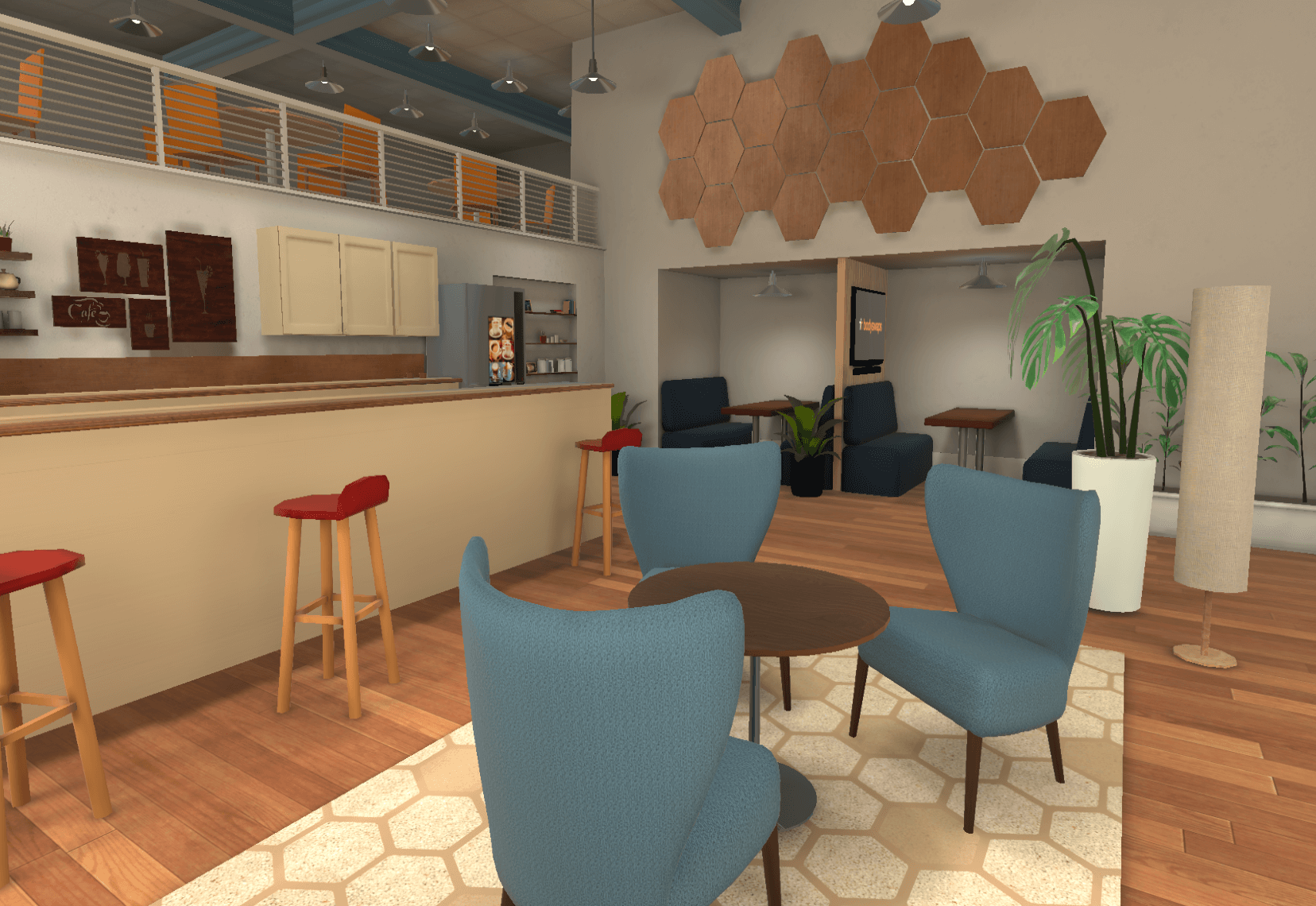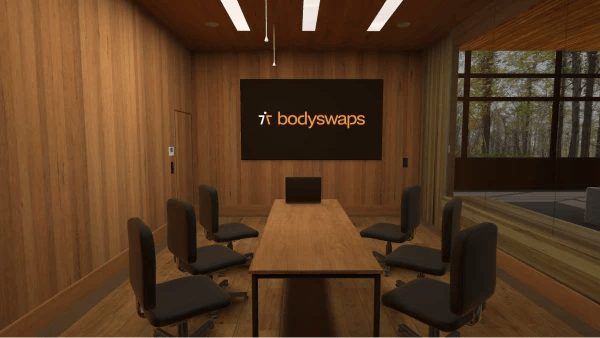Giving Feedback
Tutor notes
In today’s workplaces, providing constructive feedback on sensitive issues like microaggressions or discriminatory remarks can be challenging. This immersive module helps learners build the skills needed to foster open communication and mutual respect.
The module allows learners to practise recognising inappropriate communication and behaviours, effectively challenge them, and provide constructive feedback to help the individual reflect on their own actions. Through these exercises, learners will gain the confidence to advocate for inclusivity, empowering them to take a stand and make a positive impact in their workplace.
About this resource
Key learner outcome and goals
Learning outcome
Stop discriminatory behaviour in a workplace in its tracks
Learning goals
- Identify instances of non-inclusive behaviour
- Challenge inappropriate behaviour effectively
- Provide constructive feedback that helps the perpetrator to improve
A word about terminology
As a medium, Virtual Reality is not best suited to didactic teaching methods.
However, our intention is that all Bodyswaps modules follow a student-centred constructivist pedagogy. This means creating rich experiences in which learners can explore key concepts and ideas and reach their own conclusions.
This is why our documents speak in terms of learning goals and outcomes, rather than measurable ‘learning objectives’ (a la Bloom’s Taxonomy) per se.
Module structure
This learning journey begins with self-reflection, takes the learners through 3 topics and ends with an exit survey.
It is a linear experience, meaning the learner will be guided step by step through all the activities.
We recommend that learners fully interact with each activity to get the full benefit.
It is estimated that each topic will take the learner approximately 3 minutes to complete, although completion times vary depending on whether the learner chooses to fine-tune their freeform responses.
Learner journey
.svg)
.svg)
Single category observation
.svg)
.svg)
.svg)
.svg)
.svg)
Characters
Leo
Employee, Jeremy’s co-workerEnvironments

Tutor room – Bodyswaps HQ

Breakout room

Meeting room
Purpose
Location
Characters
N/A
Journal
Duration
1:00
The first time learners use Bodyswaps, an onboarding sequence familiarises them with the features of the app, takes them through an avatar selection and embodiment activity, and prepares them for the experience to come.
In the onboarding, learners will:
- Find out how this training is different from the rest
- Select their avatar
- Discover their virtual journal
- Learn how to navigate and use the tools and settings
Purpose
To introduce the purpose of the activity and assess the learner’s level of confidence in challenging and providing feedback on microaggressions and racist behaviour witnessed in a workplace
Location
Characters
Journal
Duration
2:00
The learner is first introduced to the scenario, they will practise identifying discrimination and giving constructive feedback to Jeremy – an employee who behaves in a racist manner at work.
At first, they will be asked to observe a conversation between Jeremy and his co-worker, Leo. Their task will be to identify Jeremy’s microaggressions and racist remarks and later challenge him in a way that encourages reflection and self-improvement.
The learner is also invited to complete a short, likert-style self-reflection survey, to indicate how confident they feel about the following key learning points:
- Identifying inappropriate behaviour
- Challenging inappropriate behaviour
- Providing constructive feedback on ways to improve professional conduct
These self-reflection questions will be repeated in the debrief at the end, to assess how the learner’s confidence levels have changed.
Note: If you wish to receive data about how the learner’s confidence levels have changed as a consequence of the training, it’s important that they complete this introduction and the debrief at the end.
Purpose
To observe a conversation between Jeremy and Leo and spot Jeremy’s microaggressions and racist behaviours
Location
Characters
Journal
Duration
Spotting racist remarks and discriminatory microaggressions at work involves being attentive to behaviours and comments that demean individuals based on their ethnicity, personal circumstance and more.
In this activity, the learner is asked to witness Jeremy and Leo discussing a collaborative project. The learner’s task is to focus on Jeremy’s behaviour and identify instances where he acts in a non-inclusive and racist way towards Leo.
The learner is asked to click their mouse / controller every time they notice inappropriate conduct. However, to encourage thoughtful observation, learners are given 10 clicks to identify 8 instances of discriminatory behaviour.
As the conversation unfolds, the learner's aim is to pay close attention to comments that offend Leo, often displayed by Jeremy as humorous or sarcastic remarks. It also primes the learner to notice instances of inferring blame, belittling, gaslighting, negative criticism and stereotyping.
At the end of the activity the learner is provided with feedback and has a chance to rewind the scene and rewatch the behaviours they fail to identify.
Purpose
To challenge Jeremy’s behaviour in a constructive way by encouraging self-reflection
Location
Characters
Jeremy
Journal
Duration
The learner now sits across from Jeremy in a meeting room, and has an opportunity to speak with him privately and help him reflect on his behaviour.
This scaffolded conversation will involve a total of five, quick exchanges, where the learner chooses what to say by selecting one out of three options. One, the most appropriate option, will be an open ended question focusing on Jeremy’s actions rather than Leo’s responses. For example:
- Why do you talk to Leonard the way you do?
- How professional do you think your treatment of Leonard was?
- How would you describe your communication with Leonard? (correct)
If the learner selects any other option, Jeremy will respond with anger or confusion. They will receive feedback explaining why their answer was more judgmental or close-ended, rather than helpful. The learner will then need to try again and won't be able to advance the conversation until they choose the most appropriate option.
The learner’s aim is to avoid making accusations and asking questions starting with ‘why’, as this will provoke a defensive reaction. Instead, their goal is to ask meaningful questions that encourage Jeremy to reflect on his use of racist language and stereotypical assumptions. Through this guided discussion, learners will practise fostering a more reflective and open conversation by basing their feedback on objective observations, rather than personal judgments.
Purpose
To allow the learner to use their own words to describe how Jeremy behaved, explain the impact it had on Leo, and suggest what he should do differently next time
Location
Characters
Journal
Duration
Now, the learner is invited to provide feedback to Jeremy about his behaviour in their own words. AI analytics pick up keywords which demonstrate that the learner understands how to describe Jeremy’s offensive and racist behaviour in an objective and non-inflammatory way.
To achieve the best result, learners should use Jeremy’s name, provide him with precise examples of his misconduct, avoid making assumptions about Leo’s feelings, and emphasise empathy and respect. They should also offer Jeremy some guidance about how to improve using phrases such as “In the future (...)” or “Think before (...)”.
At the end of the activity, the learner receives feedback about the keywords they used, and have a chance to reformulate their answer and talk to Jeremy again, if they wish.
Purpose
Debrief the learner upon completion of the training and prompt self-reflection
Location
Meeting room
Characters
N/A
Journal
N/A
Duration
TBD
The learner is now shown several Likert-type survey questions by which they can self-assess their performance in the three activities: how well they responded to Florence, how good their observational skills were in the conversation between her and Abeeku, how well they summarised the situation afterwards, how successful they were in acknowledging the impact of the bad behaviours, and how far they focused on agreeing a way forward.
Purpose
Debrief the learner upon completion of the training and prompt self-reflection
Location
Tutor room
Characters
N/A
Journal
N/A
Duration
The learner is congratulated on completing the simulation. The module is wrapped up with a reminder that giving constructive feedback on inappropriate behaviour face-to-face with the perpetrator can be awkward for both parties. It is, however, a powerful skill worth practising and can help others improve their behaviour and prevent discrimination.
Finally, the learner repeats the self-reflection questions from the start of the module to see how their confidence has changed.
Note: With soft skills training, it is not unusual to find that learners’ confidence levels actually fall upon completion. This is because people are often overconfident in their ability to communicate or empathise before the training begins. As the experience raises self-awareness, confidence levels may fall in response.
Purpose
Assess the effectiveness of the training itself
Location
N/A
Characters
N/A
Journal
N/A
Duration
Before the learner leaves the module, they are asked to complete a short survey about their experience.
This survey is not compulsory, but the data helps us to assess the effectiveness of our product and identify any areas that need improvement. Clients also find it beneficial when assessing ROI.
They are asked to mark whether they agree or disagree with the following statements, on a 10 point scale:
- I would recommend this experience to others.
- The experience helped me identify elements I could improve upon.
- I now have a better understanding of how to improve my ability to spot and challenge sexist microaggressions at work.
